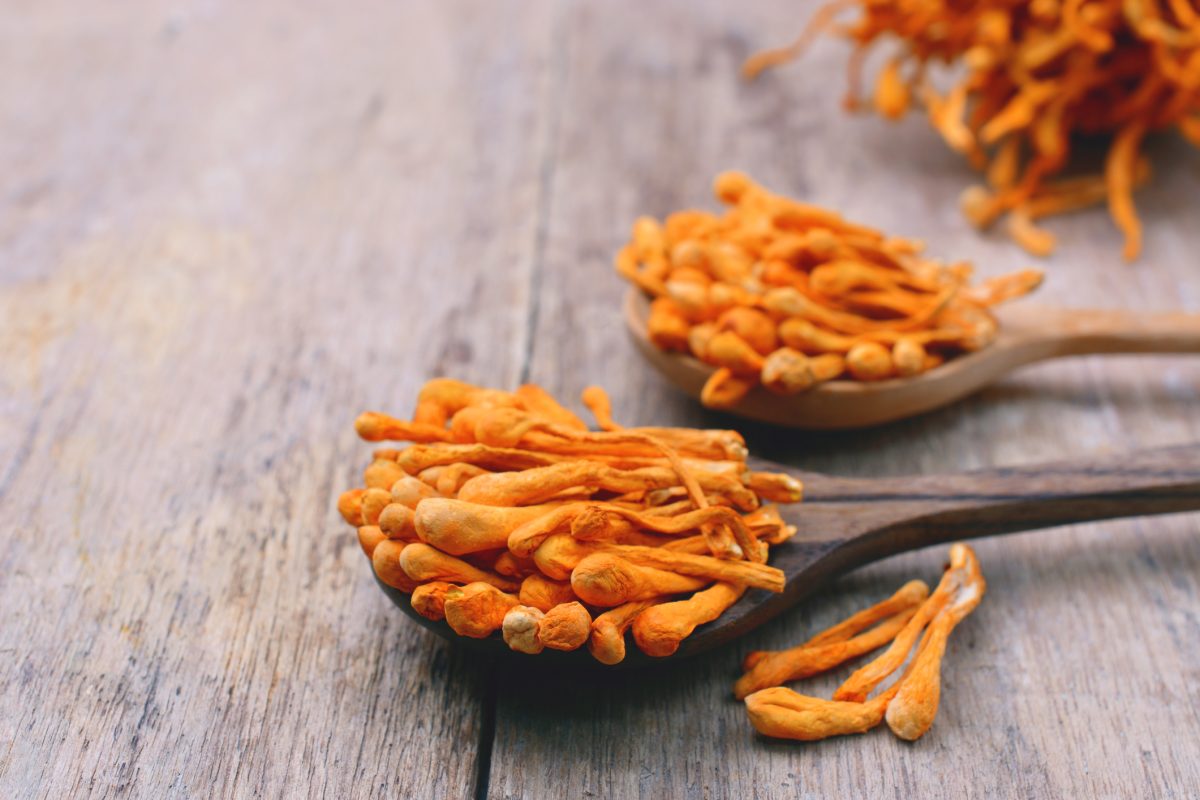Mushrooms are among the most potent botanicals known to man. Some are more popular or well-known than others, but at the moment, almost everyone is hearing about one fungus in particular: cordyceps — thanks to HBO’s hit show, The Last of Us.
But should we be worried about this fungus among us? Could the future of humanity be in the hands of a zombifying fungus?
While cordyceps is quite adept at “infecting” specific bugs in a gruesome way — attaching spores that grow tendrils throughout a host’s body and hijacking it to travel and distribute more fungus spores — you should know what it does to humans…
Cordyceps’ history with (hopefully not the last of) us
There are hundreds of medicinal mushroom species. There are around 600 species of cordyceps alone.
But cordyceps, though commonly referred to as a mushroom, is technically not one…
Because of that parasitic habit of growing on insects, they are considered entomopathogenic fungi. Don’t get hung up on the technicalities, though — cordyceps has a long history with humans as a healing, functional food.
Mushrooms are rich sources of unique health-promoting compounds and have been used in Chinese medicine and other traditional healing systems for thousands of years, and cordyceps is near the top.
One family of carbohydrates found in mushrooms is beta-glucans, which have a particular affinity for immune cells. They stimulate macrophages, lymphocytes, T-cells and Natural Killer cells. They are primarily focused on our innate immunity, the immune system’s first responders.
But mushrooms do more than boost your immunity; they “train” immune cells to respond appropriately to pathogens, toxins, cancerous cells and other dangers. Medicinal mushrooms are unique to this purpose, as they boost immunity and help calm an overactive autoimmune response. This can be pretty helpful when addressing autoimmune conditions.
Cordyceps specifically are reported to enrich bone marrow. They also have demonstrated anti-tumor activity.
Like reishi, cordyceps support athletic performance, increasing cellular energy production and oxygen utilization. One study found that cordyceps improved endurance in older people.
In addition to boosting mitochondrial function and oxygen utilization, cordyceps help detoxify the body and support the adrenals.
They also promote healthy heart function by reducing LDL (bad cholesterol) and increasing HDL (the good variety).
Should you be worried about becoming cordyceps spawn?
In a recent Nature paper, Dr. Jim Kronstad, a professor and microbiologist at UBC’s Michael Smith Laboratories, and co-authors, highlight a warming climate as a potential contributor to the spread of harmful fungi like Coccidioides, which causes valley fever, and the current rise of Candida auris, which infects hospitalized patients and is resistant to available antifungal drugs.
The authors also noted the discovery of a new fungus last year, Rhodosporidiobolus fluvialis — in humans — previously found only in soil.
R. fluvialis was discovered in the blood of two unrelated patients with serious underlying health conditions. One patient was a 61-year-old who died in an ICU in Nanjing in 2013. The other patient was an 85-year-old who died in 2016 after being treated in an ICU in Tianjin. The report doesn’t note whether the fungal infection directly contributed to the patients’ deaths or if they just happened to be infected at the time.
These are undoubtedly isolated cases. And so far, cordyceps is keeping its distance from humans.
As Dr. Kronstad says, “Fungi are super important, it’s phenomenal what they’ve done for humans.”
Using Cordyceps
Cordyceps, since they grow like slim tendrils, are often used more efficiently as a powder, which is popularly used in supplements and teas.
You can take the tendrils, referred to as “fruited bodies,” and boil them in water to make cordyceps tea. But just knowing those tendrils fruited out of an insect body is enough to turn me off of that idea.
Sources:
The new season of The Last of Us has a spore-ting chance at realism — Science Daily
The Last of Us Season 2: A Q&A with Dr. Jim Kronstad about fungal infections and climate change — The University of British Columbia
Unusual ways to boost your energy — Easy Health Options
New fungal infection discovered in China — Live Science
Read full article here




